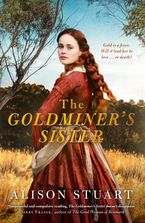Here at Romance.com.au we don’t just care about reading romance… we also want to help you WRITE.
To that end we are introducing a new monthly segment where we will share tips from book publishers and authors about getting your first manuscript written. First up we have Nicola Robinson who works as a Publisher for Harlequin Books:
Here’s the bad news – writing a synopsis is difficult. No one wants to reduce their 80,000 words of lovingly developed prose to a single page. But it is usually a requirement when submitting your manuscript for publication. And the good news is that with a few pointers, you can crack it every time.
To start with, a synopsis is not a pitch, and nor is it a back cover blurb. Your aim is not to sell your idea or your story, but to give a full outline. And yes, that means spoilers. You need to include the ending, because publishers want to know where the story is going. We want to know whether your story has a unique twist or point of view that will make it stand out. We want to know that the story makes sense; that there are no gaping plot holes or too-convenient fixes to narrative problems. We want to know that it is a story that will reward the reader for spending their hard-earned money on the book, and their precious time with your characters.
Your synopsis needn’t be a work of art. We’re looking for clarity of expression and ideas, not proof of your ability to turn a phrase. For once, we want you to tell, not show – rather than the other way around. But that doesn’t mean your synopsis can’t or shouldn’t be engaging. Advice on synopsis writing often points to sports writing in newspapers – you’ll never read a sports report that says ‘Team A got a point. Then team B got a point. Then team A got another point, and they won the game.’ That’s pretty dull. The report would be more likely to read something like, ‘Despite a raft of injuries, Team A pulled ahead early on, only for Team B to equalise before half time. A tense second half was resolved with a 79th-minute goal by Team A. You could hear the crowd roaring a mile away.’ Same story, much more engaging.
A few other points:
- You should write your synopsis in the present tense – Janet is feeling angry, so she stabs her husband Charlie with the potato peeler.
- Tell us what’s at stake for your protagonist. What does Janet want, what stands in her way, and what does she have to lose?
- Tell us how that conflict is resolved, and what changes, both internal and external, have occurred.
And some don’ts:
- You don’t need to mention every character. Only include those who actually drive the story forward – and that’s generally fewer than half a dozen.
- You also don’t need to mention every subplot. Perhaps Janet – mentioned earlier – is engaged in a bitter but unspoken potato gratin competition with her sister. It may be an amusing subplot but does it drive the story? If not, leave it out.
- You also don’t need to include back story, unless it is relevant to the core plot. ‘Janet won several prizes for economics at high school and once worked as a bank teller’ is unlikely to be relevant. On the other hand, ‘Janet’s great-great-uncle had been a butcher … and she believed that his ghost frequently whispered to her about the uses of sharp instruments’ may be entirely to the point.
- Don’t include dialogue. Dialogue, in this case, is merely clutter.
As to process when writing your synopsis, some authors write down everything – the entire plot, all the characters – perhaps a few thousand words, and then prune back, and back, and back. Others plot out the key points of their story, and build the synopsis around those. You’ll work out which method is best for you.








 Brothers of the Vine
Brothers of the Vine Forever Evermore
Forever Evermore Women of W.A.R.
Women of W.A.R.